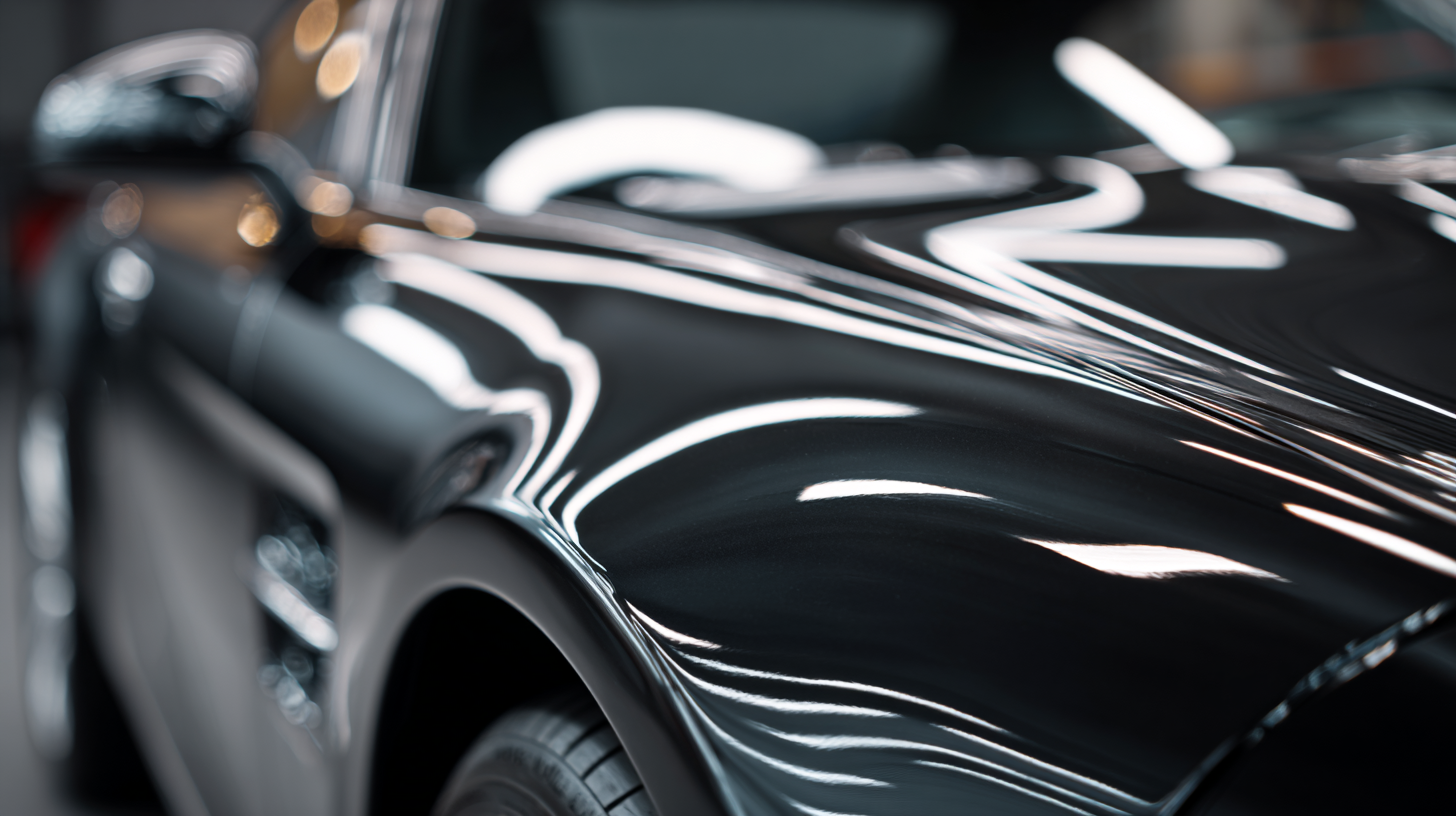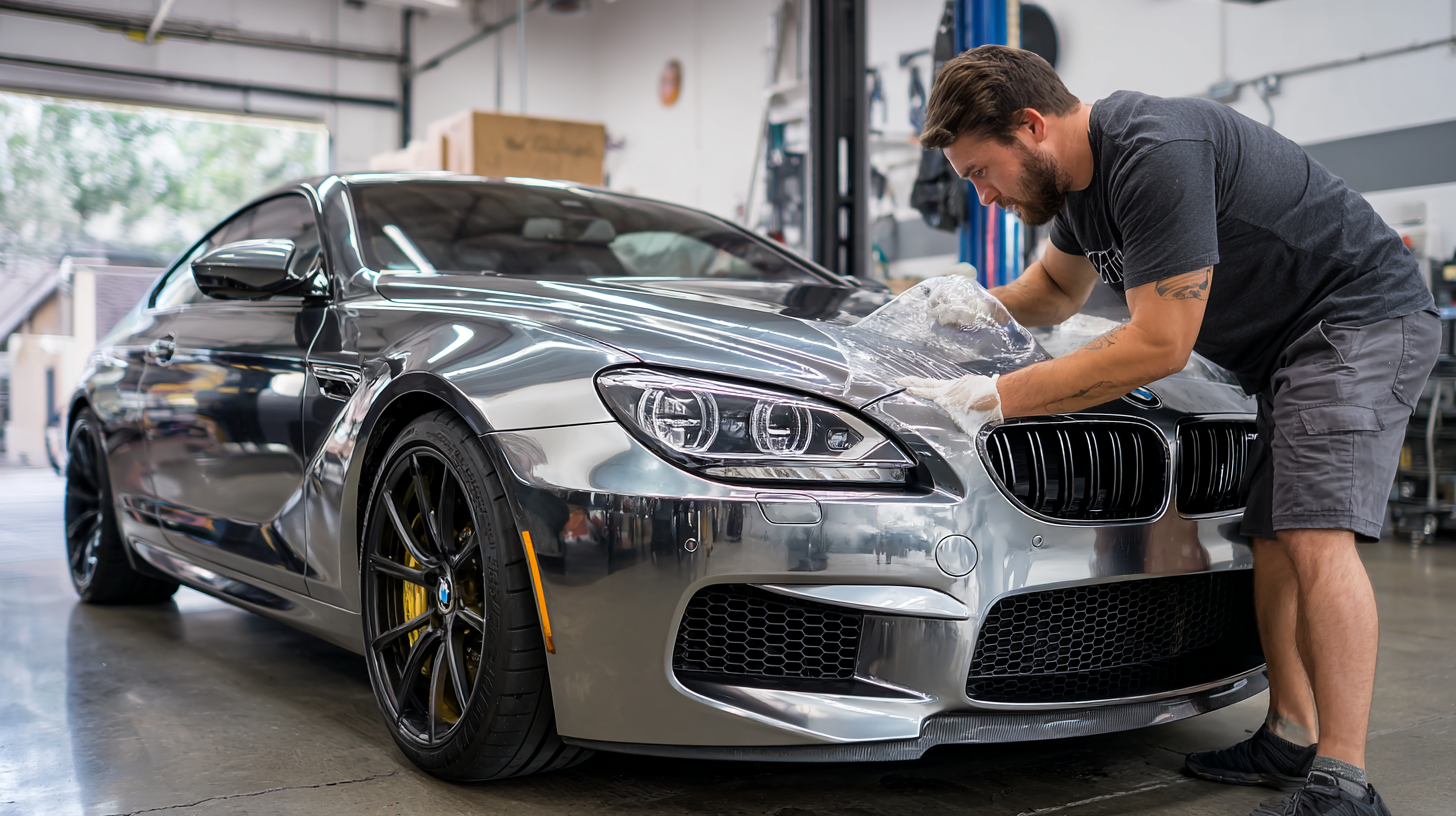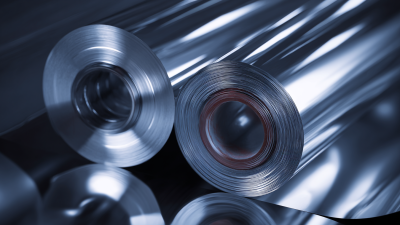How to Protect Your Vehicle with Car Anti Scratch Film Techniques
In today's fast-paced world, protecting your vehicle's exterior is more important than ever, and one effective solution has emerged:
Car Anti Scratch Film.
This innovative technology provides a transparent layer that shields your car's paint from unsightly scratches, chips, and environmental contaminants.
Car Anti Scratch Film not only preserves the aesthetic appeal of your vehicle but also adds value in the long run.
In this guide, we will explore various techniques to effectively apply and maintain
Car Anti Scratch Film, ensuring your car remains in pristine condition.
Whether you're a car enthusiast looking to enhance your vehicle's appearance or someone simply wanting to keep their investment safe,
understanding the benefits and methods of using
Car Anti Scratch Film will equip you with the necessary knowledge to protect your car effectively.
Understanding Car Anti Scratch Film: Benefits and Types
Car anti scratch films have become an essential investment for vehicle owners looking to maintain the
aesthetic appeal and resale value of their cars. These films serve as a protective layer,
shielding the vehicle's paint from scratches, scuffs, and environmental contaminants. According to a recent
industry report by Grand View Research, the global automotive protective films market is projected to reach
USD 1.92 billion by 2025, highlighting the growing awareness of vehicle protection solutions.
There are various types of car anti scratch films available, each offering unique benefits. Clear bra films are among the most popular, providing high transparency while effectively guarding against minor abrasions and UV damage. On the other hand, matte finish films offer a distinct look while still serving as a protective barrier. Research shows that vehicles treated with anti scratch films can maintain up to
50% more of their original paint quality compared to those left unprotected.
When considering car anti scratch films, here are a couple of tips: firstly, always choose a reputable brand to ensure better durability and performance. Secondly, opting for professional installation can significantly increase the film's longevity and effectiveness, as improper application can lead to peeling or bubbling. These precautions will help you maximize the benefits of your investment in vehicle protection.
Preparing Your Vehicle for Anti Scratch Film Application
Preparing your vehicle for anti-scratch film application is a crucial step in ensuring a smooth and successful installation. First, wash your car thoroughly with a pH-neutral car shampoo to remove dirt, grime, and any old wax that could interfere with the film's adhesive. After washing, dry the vehicle completely using a microfiber towel to prevent water spots.
Tips: Ensure the work area is clean and dust-free. A garage or a shaded space is ideal, as direct sunlight can cause the film to dry too quickly, making it more challenging to position accurately. Also, have all the necessary tools on hand, including a spray bottle with soapy water, a squeegee, a heat gun, and a lint-free cloth.
Next, inspect your vehicle for any imperfections on the surface, such as scratches or chips. Addressing these issues before applying the anti-scratch film will not only enhance the appearance of your car but will also ensure better adhesion. It's advisable to consult with professionals for any extensive repairs.
Tips: Consider using a clay bar to remove embedded contaminants from the paint surface, giving you a smoother area for the film to adhere to. Patience is key during the preparation phase, as taking the time to meticulously set up your vehicle will lead to better long-term results with the anti-scratch film.
How to Protect Your Vehicle with Car Anti Scratch Film Techniques
| Step |
Description |
Materials Needed |
Estimated Time |
| 1 |
Thoroughly wash the vehicle to remove dirt and debris. |
Car wash soap, sponge, water, microfiber cloth. |
1 hour |
| 2 |
Inspect the vehicle for scratches and dents that need repair. |
Scratch repair kit, microfiber towel. |
30 minutes |
| 3 |
Dry the vehicle completely to ensure proper film adhesion. |
Microfiber towels. |
15 minutes |
| 4 |
Measure and cut the anti-scratch film to fit the vehicle's surfaces. |
Anti-scratch film, cutter, measuring tape. |
1 hour |
| 5 |
Apply the film carefully, ensuring no bubbles are trapped underneath. |
Squeegee, spray bottle with soap and water. |
1-2 hours |
| 6 |
Trim any excess film and ensure edges are sealed. |
Cutter, heat gun (optional). |
30 minutes |
| 7 |
Allow the film to cure according to manufacturer instructions. |
None. |
Variable |
Step-by-Step Guide to Apply Car Anti Scratch Film
When it comes to protecting your vehicle from scratches and minor abrasions, applying car anti-scratch film is a practical solution. Begin by choosing a high-quality film specifically designed for automotive use. Before starting the installation process, thoroughly clean the area where the film will be applied. Use automotive soap and a microfiber cloth to remove any dirt, dust, or grease; this step ensures proper adhesion and a seamless finish.
Once the surface is clean and dry, measure the area and cut the film to size, allowing a slight overlap. Prepare a solution of water and a few drops of baby shampoo in a spray bottle. Mist the adhesive side of the film and the vehicle's surface to facilitate repositioning during application. Gently place the film onto the desired area, using a squeegee to smooth out any bubbles and excess liquid, working from the center outward. Repeat these steps for each section of your vehicle, ensuring that each piece is properly aligned and adheres securely. With these straightforward techniques, you can effectively protect your vehicle and maintain its pristine appearance.
Tips for Maintaining Your Car’s Anti Scratch Film
Maintaining your car’s anti-scratch film is essential for preserving its appearance and value. According to a report by the Specialty Equipment Market Association (SEMA), vehicles equipped with protective films can see a 20% increase in resale value compared to those without. To ensure that your film lasts, regular maintenance is crucial. Start by washing your vehicle frequently with a pH-balanced detergent to avoid damaging the film. It’s recommended to use a microfiber cloth, as other materials may cause scratching.

Furthermore, it’s important to avoid using high-pressure water during car washes, as this can lift the edges of the film. A study from the International Carwash Association highlights that nearly 60% of car owners utilize automatic car washes, making it vital to choose those that employ soft cloths or touchless systems to maintain film integrity. Additionally, applying a sealant every six months can help protect the film from UV damage, stains, and discoloration, ensuring your vehicle remains looking brand new for longer. By following these tips, you can extend the life of your car’s anti-scratch film and keep your vehicle in pristine condition.
Common Mistakes to Avoid When Using Anti Scratch Film
When applying car anti-scratch film, avoiding common mistakes is crucial for achieving optimal protection and aesthetics. One frequent error is not thoroughly cleaning the vehicle's surface before installation. Any dirt, dust, or grease can become trapped beneath the film, leading to bubbles and compromised adhesion. It's essential to wash and dry the area meticulously, ensuring a smooth and clean surface for the film to adhere to effectively.
Another mistake to avoid is neglecting to measure and cut the film accurately. Many users impulsively apply the film without proper measurements, resulting in uneven edges and an unprofessional appearance. Taking the time to measure each section and trimming the film accordingly will enhance both the look and durability of the application.
Additionally, applying the film in direct sunlight or extreme temperatures can lead to difficulties during installation. Temperature fluctuations can cause the film to stretch or shrink, affecting its long-term performance. Always choose a controlled environment for the best results.

Home
Products
Paint Protection Film
TPU Color PPF
Window Tint
1Ply Primary Film
2Ply Primary Film
2Ply Korean Primary Film
Nano Ceramic Film
Inorganic Nano Ceramic High Insulation Film
Skincare Nano Ceramic Film
5G HD Hot Melt Film
Magnetron Heat Reflection Film
Titanium Nitride Optical Film
Titanium Nitride HD Magnetron Metal Film
Titanium Nitride HD Skincare Film
4mil 99% Safety Film Series
2mil 99% High Insulation King Series
Constant Color High Insulation Film
Constant Color Window Film
Chameleon Window Film
3mil Windshield Film
Headlight Film
Sunroof Film
About Us
Video
News
Blog
Contact Us








